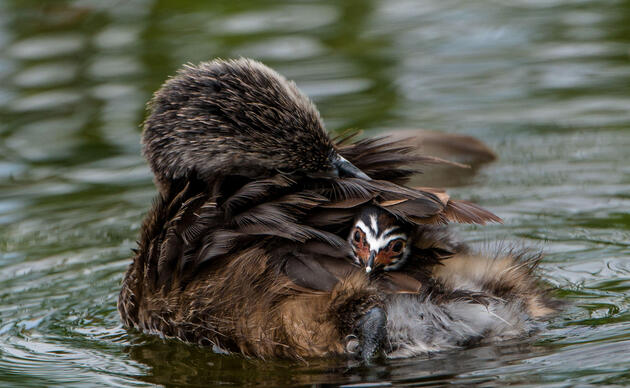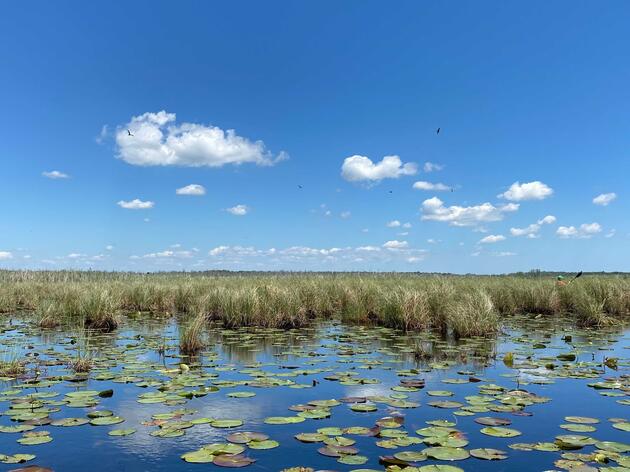Protecting Birds in the St. Mary's River and the Straits of Mackinac Region
Spanning the Upper and Lower Peninsula of Michigan, this important region includes the intersection of Lake Superior, the St. Marys River and the Straits of Mackinac. Its large coastal wetlands provide critical wildlife habitat and serve as important breeding areas for waterfowl and marsh birds like the Black Tern and American Bittern. The region’s coastal islands provide important nesting grounds for waterbirds like the Common Tern.
Like states across the Great Lakes region, Michigan has lost many of its historic wetlands. Audubon Great Lakes is working with partners across the region to restore and protect the region’s wetlands for the benefit of vulnerable marsh birds and local communities.
Working in the Areas Where Birds Need Us Most
Explore Audubon’s Vision: Restoring the Great Lakes for Birds and People to see Audubon's plans to address the biggest threats facing birds and people.
Our Restoration Work
Black Terns have an uncertain future in the Great Lakes region. Audubon Great Lakes is working to ensure our Great Lakes coastal areas play an important role in safeguarding critical breeding grounds for these elegant and distinctive terns. As part of a larger statewide breeding Black Tern survey effort, more than 15 historic Black Tern breeding sites are being monitored in the region in partnership with the Sault Saint Marie Tribe of the Chippewa Indians, Lake Superior State University, Michigan Department of Natural Resources and Three Shores Cooperative Invasive Species Management Area.
Audubon Great Lakes is partnering with Loyola University Chicago to recruit and train volunteer community scientists to monitor for secretive marsh birds to better understand how marsh birds are responding to wetlands enhancements. Loyola University is also leading on-the-ground hybrid cattail control in an effort to improve and enhance biodiversity and habitat complexity.
Future conservation work will focus on minimizing flooding and woody encroachment, planting native species, protecting and enhancing marsh bird nesting, and controlling invasive plants. Audubon Great Lakes will also work to strengthen and increase partnerships in an effort to co-develop a conservation design plan for the region. Robust monitoring of the region’s birds, which informs adaptive management, will be critical to sustaining bird populations and healthy ecosystems.
History of the Region
An important water passage, the Straits of Mackinac served as an important trade and shipping route for Native Americans, as well as early European settlers. Today, the region draws visitors from around the world to admire its unique natural landscape.
Mackinac Straits to St. Martin's Bay is recognized as an Audubon Important Bird Area (IBA) for the habitat it provides for migrating Redheads (up to 7,000 each year!) and other diving ducks each fall. The unique geography of the Straits also acts as a funnel for concentrating migrating raptors, which tend to avoid flying over large expanses of open water. Every spring, hundreds of Golden Eagles cross the Straits on their annual migration to their northern breeding grounds.
While the region has seen less coastal development than other parts of the Great Lakes, threats still remain including pollution, and non-native invasive plants and aquatic species.
The St. Mary’s River is an EPA Area of Concern (AOC) due to the discharge of pollutants from industries, and local municipalities, which contaminated the river’s sediment. AOC Federal, state and local groups are working to clean and restore the AOC with a focus on removing Beneficial Use Impairments (BUIs).
Project Partners & Supporters
Audubon Great Lakes is grateful to project partners and supporters who make our work possible.
Project Partners:
Supporters:
Audubon’s work in the St. Mary’s River and Mackinac Straits region is supported by U.S. Fish and Wildlife Service Coastal Program and the Michigan Department of Natural Resources.




